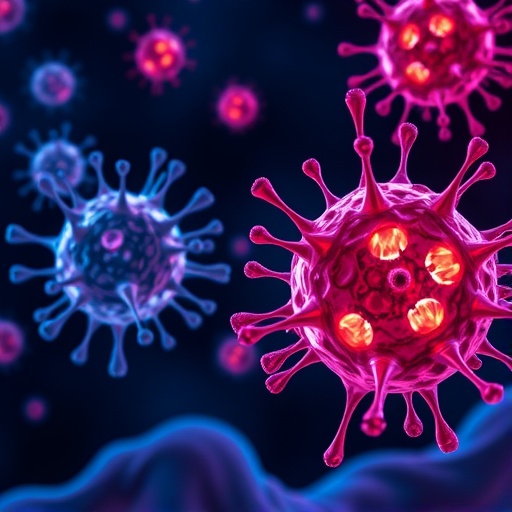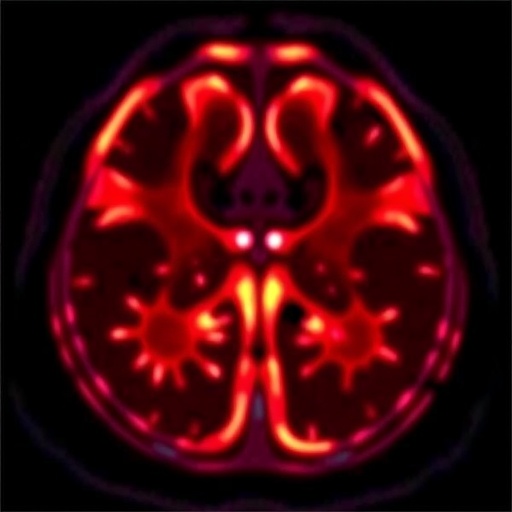A groundbreaking study from Lund University in Sweden has unveiled a novel mechanism by which acute myeloid leukemia (AML) cells evade the immune system, opening promising avenues for targeted immunotherapy. AML remains a formidable adversary in oncology, with survival rates stubbornly low despite advances in treatment. This new research illuminates a previously unknown pathway that allows AML cells to mask themselves from immune detection, offering a potential target for therapeutic intervention that could revolutionize patient outcomes.
Leukemia stem cells are a particularly elusive population, responsible for the persistence and relapse of AML after conventional treatments. The Lund team embarked on a comprehensive proteomic analysis of these stubborn cancerous cells, comparing their surface proteins against those found on normal blood stem cells. This meticulous comparison led to the identification of a unique surface protein, SLAMF6, which exhibited expression solely on leukemia stem cells, not on their healthy counterparts.
The discovery of SLAMF6’s exclusive presence on AML stem cells suggested it might be integral to the leukemia’s strategy for immune escape. Further functional experiments using CRISPR/Cas9 gene editing confirmed that SLAMF6 plays a pivotal role in subverting the immune system’s T cell response. By manipulating the gene encoding SLAMF6, the researchers demonstrated that AML cells rely heavily on this protein to avoid immune surveillance, allowing the cancer to grow unchecked.
Building upon these insights, the research team engineered a novel antibody designed to target and block SLAMF6. This antibody effectively disabled the protein’s immune-evading function. Laboratory tests using human cells and innovative mouse models infused with human AML cells revealed that the antibody treatment restored the immune system’s ability to detect and eliminate the cancerous cells. The results were nothing short of a biological breakthrough: akin to flipping a switch that reignites the immune response against the tumor.
The implications of these findings are profound. While immunotherapy has transformed the treatment landscape for many solid tumors, AML has remained resistant to these advances, partly due to the complex mechanisms cancer cells employ to dodge immune detection. The identification and successful targeting of SLAMF6 provide a mechanistic explanation for the limited success of prior immunotherapies in AML and underscore the importance of precision medicine approaches tailored to individual tumor profiles.
This study underlines an essential shift towards more personalized cancer therapy paradigms. By harnessing detailed molecular knowledge of a patient’s cancer, clinicians may soon be able to deploy targeted treatments that specifically undermine the tumor’s defenses without collateral damage to normal cells. Such strategies promise to reduce the harsh side effects associated with current AML treatments like intensive chemotherapy and stem cell transplantation.
The research was conducted using a blend of in vitro experiments and sophisticated in vivo models, including mice transplanted with human AML cells. These dual approaches ensured that the findings have relevance not only in a controlled laboratory setting but also in more complex living systems, bolstering confidence in the potential clinical applicability of the antibody therapy.
Recognizing the therapeutic potential of their discovery, the researchers have founded a spin-off company, Lead Biologics, tasked with advancing the antibody through preclinical development and into clinical trials. Their goal is to translate this scientific breakthrough into a viable treatment option for patients urgently needing alternatives to current, often toxic regimens.
Despite the excitement surrounding these findings, the researchers caution that extensive further work is necessary before this therapy can be deemed patient-ready. Clinical trials will need to rigorously assess safety, dosage, and efficacy in diverse patient populations. Yet, the study sets a new benchmark in AML research, defining a clear target that could finally enhance immunotherapy’s impact on this stubborn leukemia.
Funding for this innovative project came from an array of prestigious institutions, including the Swedish Childhood Cancer Fund, the Swedish Cancer Society, and the Knut and Alice Wallenberg Foundation. Collaboration across disciplines and institutions was critical, emphasizing the integrative approach required to tackle challenging cancers like AML.
The study’s publication in the esteemed journal Nature Cancer illustrates the high caliber and global relevance of this work. It adds to the rapidly expanding field of cancer immunotherapy, where the hunt for novel immune evasion mechanisms continues to drive therapeutic innovation.
In the broader context, this research highlights the power of targeting immune escape pathways to overcome cancer resistance. Each newly discovered mechanism like SLAMF6 offers hope that, one day, even the most aggressive and treatment-resistant cancers can be outmaneuvered by the patient’s own immune system. The future of oncology likely depends on these finely targeted approaches, augmenting immune function to achieve durable remissions and ultimately cures.
Subject of Research: Cells
Article Title: Aberrant expression of SLAMF6 constitutes a targetable immune escape mechanism in acute myeloid leukemia
News Publication Date: 3-Oct-2025
Web References: https://doi.org/10.1038/s43018-025-01054-6
Image Credits: Tove Smeds / Lund University
Keywords: Acute Myeloid Leukemia, AML, Immunotherapy, SLAMF6, Immune Escape, Antibody Therapy, Leukemia Stem Cells, CRISPR/Cas9, Cancer Immunology, Targeted Treatment, Preclinical Research, Immuno-Oncology
Tags: acute myeloid leukemia researchadvancements in leukemia treatmentcancer stem cell persistenceCRISPR gene editing in cancerimmune system and leukemialeukemia immune evasion mechanismsleukemia stem cell identificationLund University leukemia studynovel cancer therapeutic targetsproteomic analysis in oncologySLAMF6 protein in AMLtargeted immunotherapy for leukemia





